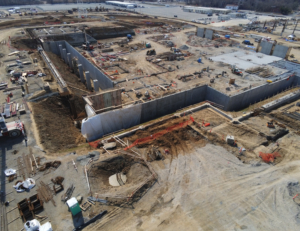
For hundreds of years, the U.S. Army Corps of Engineers (USACE) has overseen some of the country’s most monumental civil works – projects that improved waterway passages, conserved the environment, mitigated flooding, and, ultimately, made the nation more livable. The sprawling scope of USACE projects has almost always depended on assistance from private sector contractors. And as USACE continues to carry out its mission of civil safety, it will just as surely continue needing private sector expertise. Newly announced opportunities to contract with USACE clearly affirm this.
 Along the midwestern stretch of the Mississippi River in Missouri several new USACE opportunities are emerging. In early 2022, the Kansas City District of USACE will oversee a solicitation for a $10 million project that will require a construction partner to deliver a Remote Inspection Facility for the National Geospatial-Intelligence Agency (NGA) in St. Louis. Work is slated to begin in 2022 and, once completed, the facility will be the home of all vehicle and cargo inspections.
Along the midwestern stretch of the Mississippi River in Missouri several new USACE opportunities are emerging. In early 2022, the Kansas City District of USACE will oversee a solicitation for a $10 million project that will require a construction partner to deliver a Remote Inspection Facility for the National Geospatial-Intelligence Agency (NGA) in St. Louis. Work is slated to begin in 2022 and, once completed, the facility will be the home of all vehicle and cargo inspections.
Other modernization projects related to the NGA are planned. One effort will include construction of an Access Control Point facility and the cost projection exceeds $10 million. The work will extend over two years, beginning with an anticipated start date in 2022.
In October, USACE announced plans to contract work for a Coastal Storm Risk Management initiative, which includes projects at two sites in North Carolina to stabilize the state’s shorefront. The projects are designed to distribute over 1.6 million cubic yards of sand between the ocean shore of Kure Beach and the beachfront along Carolina Beach. Each project has been assigned a prospective budget between $8 million and $10 million. The work will begin in the designated ‘environmental window’ for sand-dredging which falls between November 2021 and April 2022.
Opportunities also are eminent for a massive shoreline stabilization initiative in Florida. Studies to recommend projects for stabilizing locations along the state’s shoreline where flooding and storm damage have been completed, and the project’s launch will occur soon. For the Florida Keys, the study recommended a $2.6 billion project that will involve home-raising, structural floodproofing, and other construction measures. Once the plan is funded in early 2022, the Florida Keys segment of the initiative will proceed to pre-construction and engineering design.
In the city of Cougar, Washington, USACE will solicit proposals for work on the Mount St. Helens Spirit Lake Headwall in early 2022 with an estimated project cost of $10 million to $20 million. This work will include cutting a 3-mile temporary access road along the designated site and constructing a lakeside barge loading facility. These measures will permit more efficient construction of a cofferdam and the replacement of various gates as well as other concrete repairs.
USACE also will seek a contracting partner within its design, manufacturing, and construction framework for projects. This work will center on critical repairs and renovations for John Day Dam in Oregon and its associated facilities. USACE’s Portland District has assigned the project a budget of more than $500 million for the three stages of construction. Work is slated to begin in 2024.
In October. USACE issued recommendations for numerous projects grouped under its Flood Risk Management and Bank Stabilization initiative in Selma, Alabama. Costs for this work have been estimated at $23.9 million. This funding is allocated to prevent structural failure of 10 historic buildings along the riverbank’s viewshed. The historic structures identified are deemed ‘at risk of failure’ because of their positioning along an actively eroding riverbank.
Texas also is partnering with USACE, and projects designed to preserve the integrity of the shoreline in Beaumont are anticipated. Stabilizing the city’s shoreline against erosion has been a priority for city leaders in Beaumont since tropical storm Harvey hit the region in 2017. This stabilization initiative, which will be 90 percent funded by the Federal Emergency Management Agency, carries an estimated cost of $27 million. A solicitation is scheduled for release before 2021 ends.
Future USACE partnerships in Texas include significant opportunities related to improving navigation through the state’s network of waterways. A recent study documenting delays along both the Brazos and Colorado rivers culminated in a $414 million plan that involves two major construction projects. Work will involve a channel and sector gate along the Brazos River and another 125-foot sector gate on each side of the Colorado River. Moreover, the plan will involve construction of a 15-acre tidal wetland habitat. Dredged material will be used to offset 15 acres of wetland habitat that will be impacted by the expected range of construction. Based on these objectives, the project’s preconstruction engineering and design phase has an estimated cost of $23.55 million.
Projects such as these have been shouldered by the Army Corps of Engineers for multiple centuries. That responsibility will continue, and in the future, USACE will depend even more than ever on the dedicated efforts of private sector partners.
